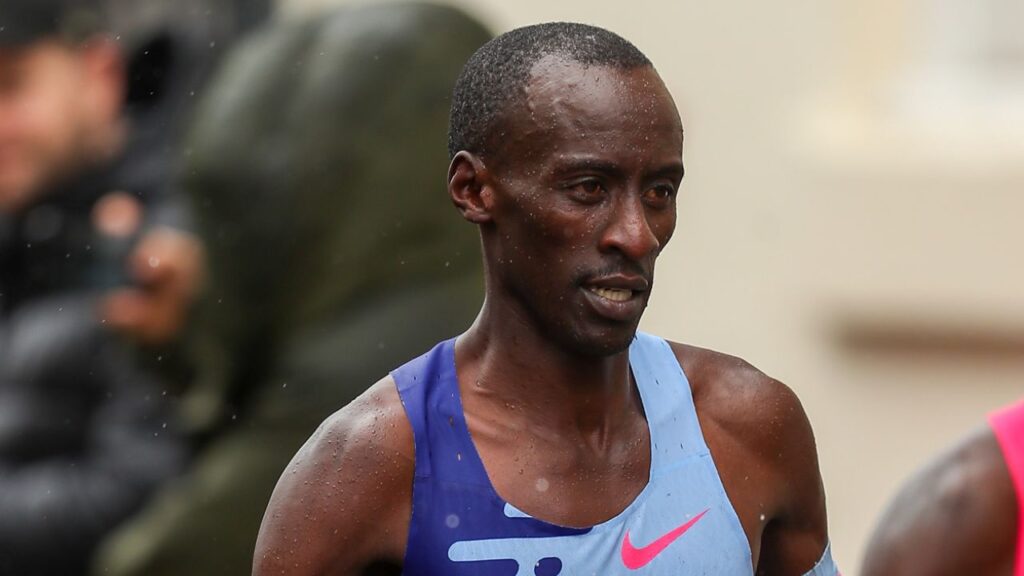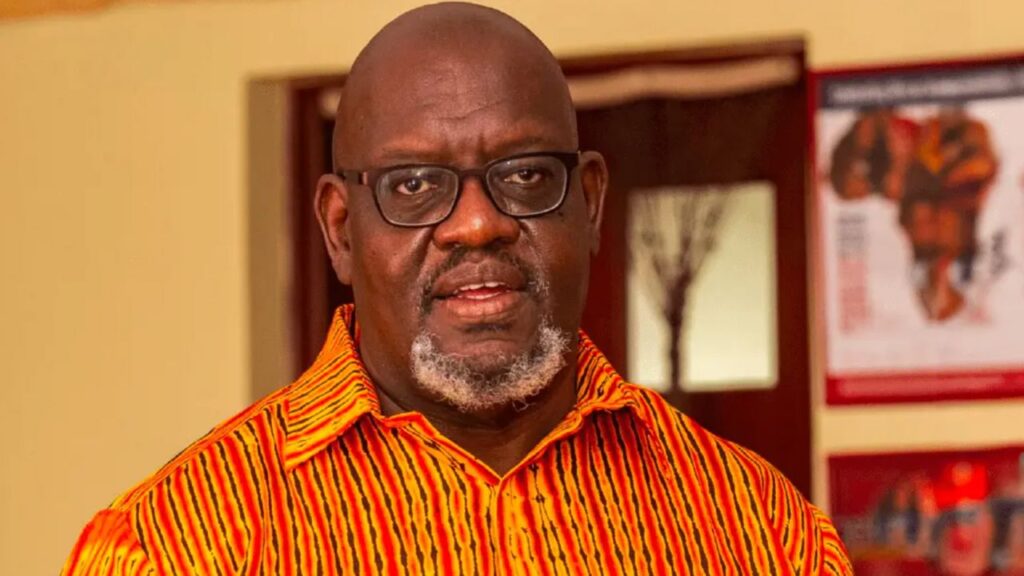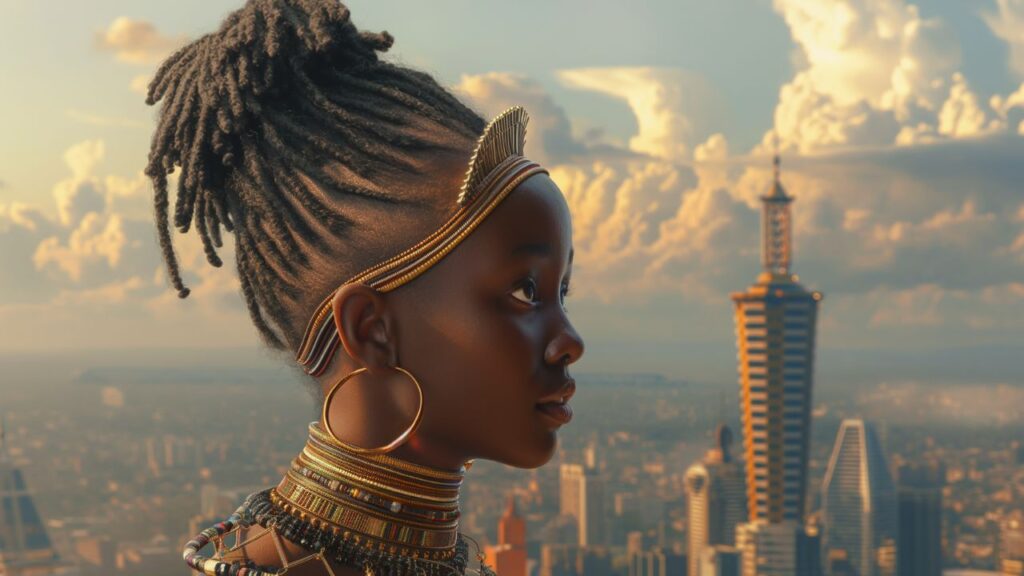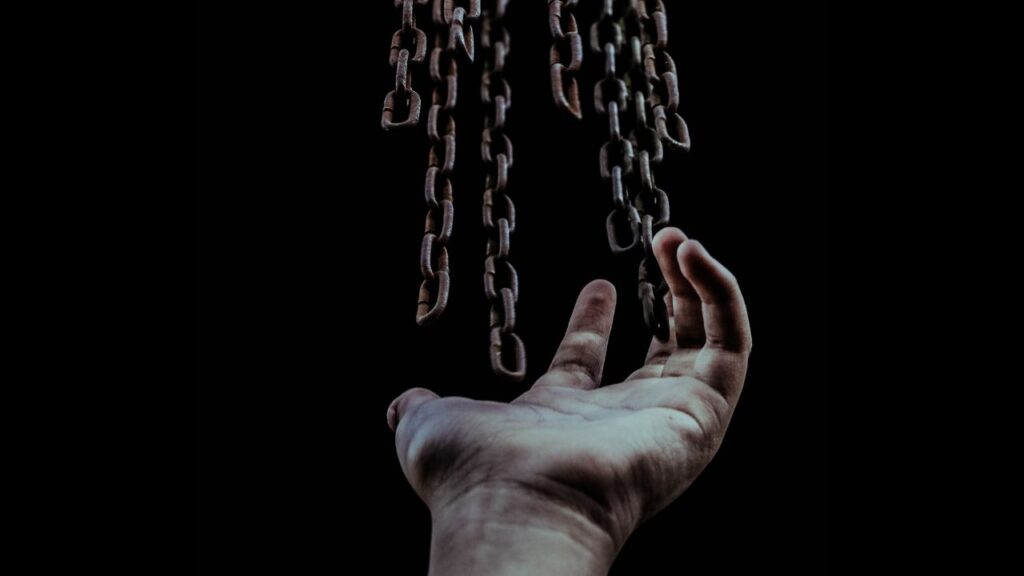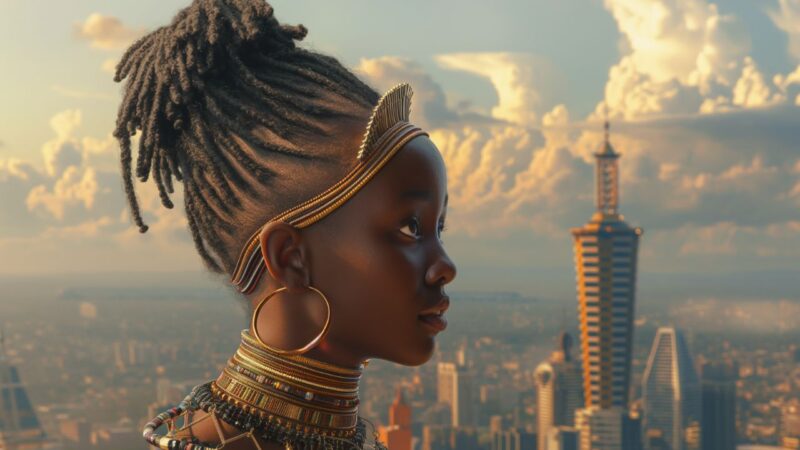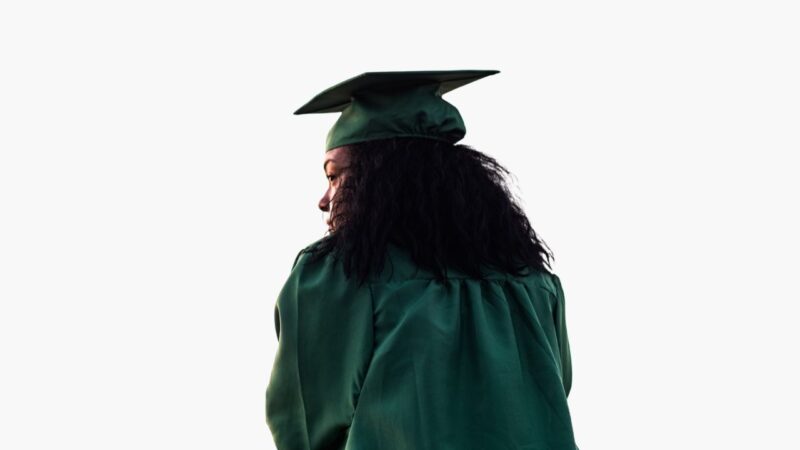Like everyone else around the globe, I have been watching and reading about the events that unfolded after the murder of George Floyd in Minneapolis, Minnesota on 25 May 2020. At this point, I thought that everyone from entertainers to athletes, politicians, journalists, and ordinary citizens from all walks of life from London to Lagos, from Paris to Pretoria, had provided their explanation and analyses of the blatant disregard for human life displayed by the former police officer, Dereck Chauvin and his inexperienced and inept colleagues. I asked myself what, if anything, I could add to the discourse. And then it occurred to me that perhaps I had something to add through my national, transnational, Pan-Africanist, political, academic, and social lenses.
There are several things and observations that have prompted me to write this essay. First, I received a very heartfelt and very profound email from a student I taught a couple of semesters ago at the United States International University-Africa. The course was titled Comparative Political Systems and one theme in the course is liberal democracies that are covered in the text in the usual male and Eurocentric manner where the United States is explained within the context of liberal democracy.
The way I teach it is not in line with this inaccurate portrayal of American exceptionalism. I teach it by providing the historical, social, economic, and political struggles that all racial minorities experienced in their efforts to achieve citizenship rights. I start with African Americans. I provide their experiences from 1619-1965. I then cover Native Americans, Chinese Americans, Japanese Americans and Mexican Americans.
Why do I cover only these groups? It is because by the time large numbers of other groups such as the Vietnamese, Indians, Nigerians, Ethiopians, Ghanaians, Cubans, and Hmong (one of the police officers that was with Derek Chauvin during the murder of George Floyd is a member of this community) began to arrive in the country, their civil rights were already recognised in law. On paper at least, they did not have to depend on the kindness of their adversaries to protect their civil rights.
The course covers public policies and not opinions regarding the social construction of race and how it was codified into law. The effects of these policies are still manifested today. A few examples should suffice: the codification of slavery into law beginning in my home state of Virginia in the 1660s, Slave Codes, the Three-Fifths Compromise, the Fugitive Slave Act, the Civil War, the failure of Reconstruction, Black Codes, the founding of the Ku Klux Klan in 1866 and other white domestic terrorist groups, the decision by the highest court in the land in the Plessy vs. Ferguson case (1896), the Red Summer of 1919, the destruction of the Greenwood District that was dubbed the Black Wall Street in Tulsa, Oklahoma (1921), redlining, restrictive covenants, and the murders of so many including Emmet Till, Medgar Evers, James Chaney, and members of the Black Panther Party such as Mark Clark and Fred Hampton.
My former student said that he was witnessing the social construction of race carried out live in technicolour in his home. He had finally understood what I had taught him in class and the importance of learning the racial politics of the mighty United States of America.
Second, I am currently teaching Introduction to Political Science and the questions and, on the one hand, the issues raised by my students are not surprising. On the other hand, it is incredulous that some of them are not able to connect George Floyd to the murders of Kenyan youth in particular at the hands of security forces and the police in Kenya. Race is not the issue here, but place of residence, ethnicity, and class certainly are, and citizens are profiled and surveilled accordingly.
One student asked why it was that African Americans had not protested earlier. This question was raised despite the fact that I had made available to the class readings, documentaries, and podcasts that explained the Civil Rights Movement, Black Nationalist struggles and groups such as the Student Non-Violent Coordinating Committee (SNCC) and the Mississippi Freedom Democratic Party (MFDP) who protested and demonstrated long before the establishment of Black Lives Matter (BLM). Finally, their inability to connect the history, struggles, oppression, and exploitation of Kenyans, Africans, and people of African descent is frustrating and downright sad. Some of it is not their fault.
The teaching and learning of one’s history and culture should start in the home and continue in schools. No African or African-descended person should ever expect that schools and curricula that were not developed for us and by us will truly educate their children. It is not in the interest of the private schools here in Kenya that pride themselves on offering a British or American curriculum. More sad is the fact that Kenyan public schools do not seem to be interested in teaching their students African and Kenyan history either. If this education is not provided by the home/parents, elementary and high schools, what about the few who are enrolled in tertiary schools? One might think that by this time it is too late. It is never too late, but the fact of the matter is, it is not provided at that level either.
I dare say not a whole lot has changed when it comes to browbeating students into believing that everything that is worth having, including education, cannot and must not be African. There is a passage in Toni Morrison’s novel Paradise that refers to Native American girls in a Catholic boarding school in Oklahoma, but she could have very well been writing about Kenya. She provides the reasoning and the importance of the school from the viewpoint of the Catholic nuns who are desperately trying to keep the school open as most of the boarding schools were Protestant. It is worth quoting:
It was an opportunity to intervene at the heart of the problem: to bring God and language to natives who were assumed to have neither; to alter their diets, their clothes, their minds; to help them despise everything that had once made their lives worthwhile and to offer them instead the privilege of knowing the one and only God and a chance, thereby, for redemption.
By teaching the social construction of race, my intention is not to brainwash them into thinking as I think; that would not be a positive outcome. My goal is to alter their minds. That is what happened to the student I mentioned earlier: an alteration of the mind occurred because the mind was opened to receive new facts, analyses, and worldview. He was made to think and question what he thought he knew. That is the role of education and that is our role as professors; to make our students think. I teach the social construction of race in all of my classes from Refugee Studies to Development Issues in Africa, to African International Relations because it is necessary. None of the topics/themes in these classes would make any sense without it.
The University is closed due to COVID-19 but there are various platforms where faculty can post comments, video clips, and so forth. So I was actually surprised by the lack of discussion following the murder of George Floyd although, I will admit, I myself did not comment initially. I am the only member of the historic African Diaspora on the faculty and I did not want to bear the responsibility of speaking and representing more than forty million people in the United States.
However, a recent posting prompted me to weigh in because it shed light on why students asked the questions that they did. Students have not been taught about how the social construction of race has affected them in Kenya. It is as if those things such as the murder of George Floyd and others are an American problem. They do not seem to connect the social construction of race to imperialism, colonialism, labour reserves, the colour bar, and passes in settler colonies in Kenya and throughout Africa. They do not connect the phenomenon of skin bleaching and the blond-dyed hair to the social construction of race. It is our responsibility as professors to deconstruct the social construction of race in our classrooms, in the readings that we assign, in the discussions that we lead and facilitate, and in our teaching.
However, I learned a long time ago that teaching is not value-free. We enter the Academy and the classroom with our worldviews that have been molded by race, class, gender, religion, location, and family background. In addition, professors cannot and will not teach what they do not know. Moreover, they will not teach what they do not value. If we do not know or value our history and struggles, how can we then teach our students about them? Therefore, when a colleague attempted to dismiss the definition of “Negro” as something that is petty and innocuous, it served as a trigger for this essay.
Words and definitions have meanings and when they are superimposed upon any group, we as academics need to deconstruct them and give explanations to our students that provide an intellectual examination of the social construction of race. It is one thing not to know; one can always educate oneself, but it is another thing altogether when one does not see the value in knowing. When this occurs, it is no wonder that we get the questions and observations that we do from our students concerning racial politics in the United States. Students are here to learn; professors should be here to teach them. We must teach our students here in Kenya why this white police officer thought nothing of putting and then holding his knee on the neck of George Floyd for eight minutes and forty-six seconds.
For anyone who watched the infamous video, it is obvious that the officer did it in a gleeful manner; he was posing for the cameras. It was as if he was saying look at me; I have the power to squeeze out this man’s life in broad daylight while being filmed and no one can stop me and I will get away with it with impunity. How do you teach that without deconstructing the social construction of race? This is easy to do when you know the history behind it and, moreover, you value that history. When a student asked if I thought the looting was justified, I could easily answer it because African Americans are sick and tired of being sick and tired. If COVID-19 has not made this crystal clear, I do not know what will.
Finally, I asked my students if they have relatives and friends who have immigrated to the United States and what sectors employed them. Several answered that they have relatives and friends who are in states that have high levels of infections and deaths caused by the virus. I then asked them what sectors employ their friends and relatives. I did not want to assume that I knew the answers but as it turned out, they were the same sectors that employ large numbers of the historic Diaspora: home care, health care, public sector, and retail.
Simply put, the COVID-19 pandemic and the murder of George Floyd have made it even more important to teach the ramifications of the social construction of race in the United States. Students can understand and examine the similar conditions of African-descended people in the United Kingdom, France, Brazil, Germany, Spain, and other countries that are directly connected to the social construction of race.
Third, the memorial service for George Floyd in Minneapolis and his Homegoing service in Houston also prompted me to write this essay. It was the words of the diehard champion of civil rights, Rev. Al Sharpton, at both events that made me think and reflect on deconstructing the social construction of race and teaching it while Black in Kenya. In particular, it was that part of the Homegoing celebration where he spoke about the knee of white America being on African Americans’ necks for centuries.
That knee was there almost from the beginning through the manifestation of the public policies mentioned above: Slave Codes, Black Codes, and Sundown Towns. Because African Americans were socially constructed as the “other” and the “Negro” was defined as basically sub-human, it was believed in all circles of white America that the white knee had to be placed on the necks of Black Americans or else they would return to their original state of barbarism. How else would you explain the hell-bent efforts by whites in the American south in particular, to “keep the Nigger down” following Reconstruction?
Ida Bell Wells wrote about this in her journal following the lynching of her three friends, Thomas Moss, Calvin McDowell, and Henry Stewart, in Memphis. These three men were upstanding members of the city; they practiced the Protestant Work Ethic; they did as Booker T. Washington implored African Americans to do at this time. They cast down their buckets where they were in the south. They embraced the ownership of private property. Then why were they lynched? They did not whistle at a white woman as Emmet Till was accused of doing. They did not rape a white woman or have consensual sex with one. What crime did they commit that resulted in their extrajudicial killing? They opened the People’s Grocery across the street from a white owned grocery store! African Americans began to patronise the People’s Grocery instead of the white-owned one.
The white owner and others treated this as a major affront and insult. Instead of embracing capitalism, competition, and individual merit, they took it upon themselves to go into the store and intimidate the owners and their customers who were mainly Black men who were armed. When the Black men defended themselves by using their weapons, the white man’s knee had to be firmly placed on their necks. They had to be put back in their place or else the social, political, and economic order would crumble. In sum, all three men were lynched. Whether it is the knee, noose, gun, fists, or whatever, Black men (largely) and Black women, have been murdered, lynched, maimed, and brutalised just because of the colour of their skin.
Rev. Al Sharpton delivered another thought-provoking message during his eulogy of George Floyd; that part of the eulogy where he spoke about his last name being the name of the white master who owned his family in South Carolina. The fact that every time he signs that name he is writing not his name but the name of the white master. With as much education as I have, and as much as I thought I was attuned to my oppression and the oppression of Black people in the US, I had never articulated it in that manner.
I take great pride in the names of my ancestors: Johnson, Streets, Jenkins, and Veney. I love to walk around my neighborhood in Nairobi in my Johnson and Veney family reunion t-shirts proudly displaying my history and my ancestors. I am proud of them for it is upon their shoulders that I stand. It is their great sacrifice, hard work, faith, determination, and perseverance that allowed me to obtain a PhD, teach in the Midwest, the East and West Coast of the United States, and now in Nairobi.
I also proudly wear my two t-shirts to display the name of my MA alma mater —Howard University. The University was named after a white Union officer during the Civil War—Oliver Otis Howard. How many others such as Lincoln University (both in Pennsylvania and Missouri), and Spelman College are named after white people? Wilberforce University, the first private HBCU (Historically Black Colleges and Universities) was named after William Wilberforce, a staunch abolitionist. Regardless of whether they are family names or university names, they are the names of white people. I am going to have to figure out how to reconcile the two.
I grew up in the belly of colonial America—Westmoreland County, Virginia. Growing up on George Washington’s Birthplace Road, I was literally surrounded by all the symbols of colonial and revolutionary America. Not too far from where I grew up was the birthplace of the confederate general, Robert E. Lee. All of my known ancestors on all sides were born and raised in this county. An open house would be held on George Washington’s birthday and I remember looking forward to and enjoying the apple cider and ginger bread that were given to all of the visitors. I remember field trips to Stratford Hall, the family home of the confederate general.
The social construction of race ran so deeply in my county that African Americans did not get a high school until 1937! They had been in that county from the 1600s; they had made many families which still reside in the county rich with their labour that produced tobacco, corn, wheat, and from the rivers that were bountiful with fish, crabs, and oysters. Yet, they were not deemed worthy to attend school beyond the elementary level. A.T. Johnson High School was opened in 1937 until 1970 when all public schools in the county were integrated. It is important to note that in the Brown vs. the Board of Education of Topeka, the Kansas Supreme Court decision of 1954 ruled segregated schools to be unconstitutional. Yet, it took Westmoreland almost twenty years to act with all deliberate speed in integrating its schools.
The eulogy by Rev. Al Sharpton during the Floyd Homegoing service made me reflect on not just my name, but the name of the first high school for Blacks in Westmoreland County and the name of the school we could now attend. A.T. Johnson High School was named after an African American. That school was turned into a middle school and African American students who lived in that part of the county were then integrated into Washington and Lee High School.
Rev. Sharpton’s eulogy made me articulate this: our beloved A.T. Johnson High School that my ancestors had worked so hard to establish was now demoted to a middle school. And the pride that was once felt by all who went through its doors was now replaced with a school named for two slave owners, one of whom was a traitor who went to war against the country to maintain slavery! What a price to pay for integration. Even worse, A.T. Johnson High School is no longer open as a school.
The Historyland Highway runs through the county, yet there was rarely any mention of our history and contributions until people who attended A.T. Johnson High School kicked open the door of inclusion. A.T. Johnson High School is now a museum and it has been placed on the list of historic sites in Virginia. This is a manifestation of African Americans knowing and valuing their history; they fought tooth and nail to get that historic recognition and for the former school to operate as a museum.
Rev. Sharpton’s eulogy made me further reflect on how knowingly or unknowingly, wittingly or unwittingly, and consciously or unconsciously we as African Americans have been inculcated into American political culture through various agents of political socialisation. Most of us celebrate Thanksgiving, the 4th of July, and Presidents’ Day which for years was George Washington’s Birthday. Have we really taken the time to reflect on the meaning of these holidays and to ask ourselves why we celebrate them? We celebrate them because we are Americans; they represent American culture and we are part and parcel of American culture. Some would even argue that without the influence of African culture, there would be no American culture.
This provides an explanation for the frustration, pain, anger, sadness, and hurt felt and experienced by African Americans following the murder of George Floyd. Despite serving in every war that the country has engaged in, pulling themselves up without any boots or bootstraps following their emancipation in 1865, establishing their own businesses, newspapers, sororities, fraternities, civil rights organisations, and benevolent organisations—along with the cornerstone that nurtures and undergirds the community to this day, churches—African Americans are still not viewed or treated as American citizens. Yet we continue to keep and pass on these names of the slave masters.
Finally, deconstructing the social construction of race within the context of the murder of George Floyd as an African American teaching in Nairobi at a university that is half Kenyan and half American has been frustrating on the one hand and fulfilling on the other. The frustrating part is that I am the only African American on campus. It is not the same as being the only African American on a predominantly white campus or the only one in a department in the United States. Still, during the last couple of weeks, I have felt like a one-person island out in the Indian Ocean. This has been made worse by the closure of the University as there is not the opportunity to have conversations in the office or in the hallways and to be honest, I am not so sure that my colleagues would even want to have these conversations.
The positive aspect of teaching here is that I am free to openly and honestly discuss the social construction of race and its legacies that are still experienced by African Americans. I am liberated from the accusations that I teach about race too much. I am free from being labelled opinionated when I speak truth to knowledge about racism and discrimination. I am free from white students being intimidated by me because I am Black and a woman. Students may be intimidated by me here, but it’s not because I am Black. I am free because I am included, I am at the table, I am not marginalised. I am not here because of some misguided policy on diversity. I am free because on campus I do not experience micro aggressions. I am not viewed as an affirmative action hire who earned a PhD that will never be valued in the same way as that of a white professor.
Furthermore, the social construction of race and the murder of George Floyd and others by the police and private citizens has made me reflect upon and appreciate my experiences of living here and not having to deal with daily micro aggressions: there is no such thing as driving, dining, shopping, vacationing, birdwatching, swimming, walking, jogging, or hiking while Black. No one knows or cares who you are. People automatically assume you are Kenyan until you open your mouth. And when they discover that you are American, there is a certain amount of respect that you are given in restaurants, hotels, on safari, at the Coast and in salons.
In sum, here your accent trumps everything whereas in the United States your skin colour trumps everything. Observing all the developments surrounding the death of George Floyd while living in Kenya has solidified in my mind that there is a racial tax on many levels in the United States. I do not pay that racial tax here. I am no longer being racially surveilled. I can wake up, go to campus, take walks, go shopping, go on vacation, live my life, and simply breathe without thinking about being Black every single day.


